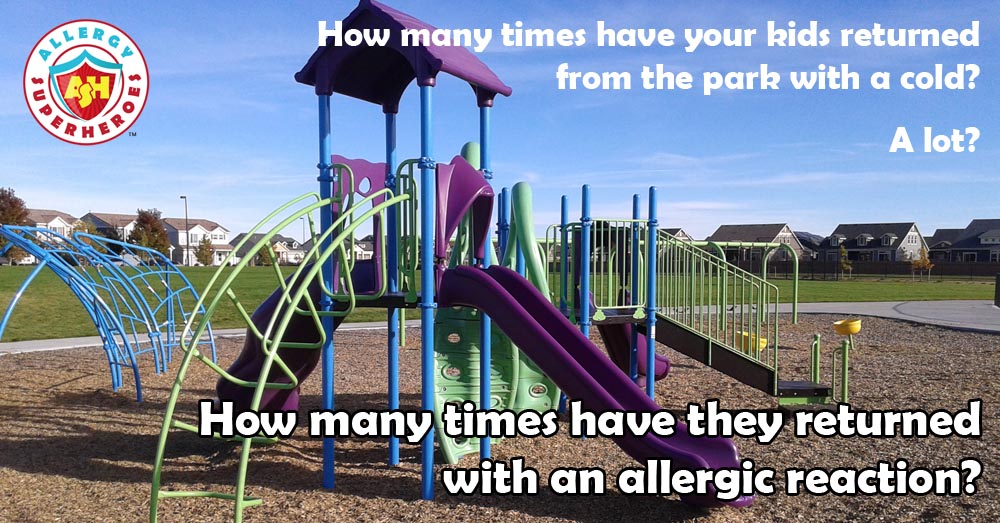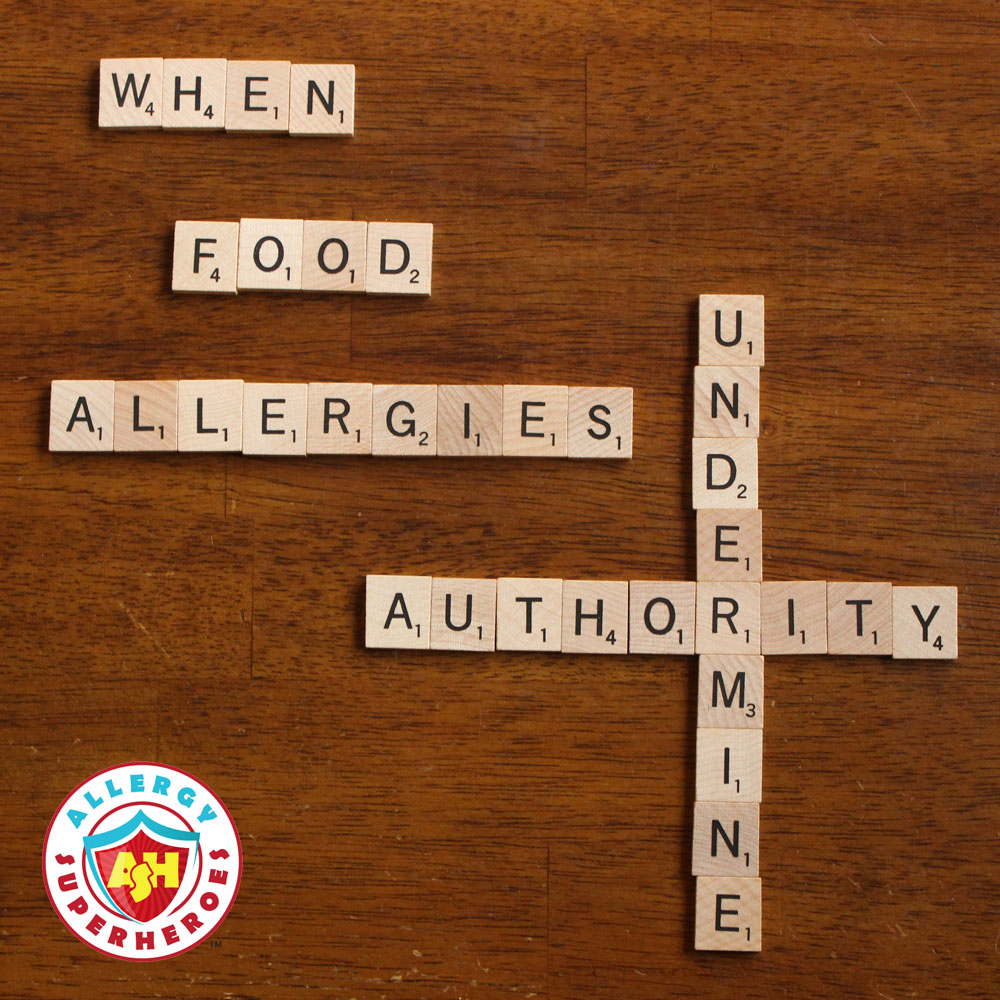 How many times have your kids returned from the park with a cold? A lot? How many times have they returned with an allergic reaction?
How many times have your kids returned from the park with a cold? A lot? How many times have they returned with an allergic reaction?
Don’t get me wrong, the point of this image/question isn’t to scare you, but rather to provide a bit of perspective.
After all, we’ve all been there. We take our kids out for an hour to run off their energy, and a few hours later the crankiness begins. It’s followed by sniffling or a cough, and within a day they’ve got a full-blown cold. We all know that kids share germs more readily than they’ll share anything else, and if your kids seem to spend at least half of the winter with one virus or another, you’re hardly alone.
Germs insidiously hide just about everywhere. You don’t have to see a snotty kid at the playground in order to be exposed. Germs can be deposited and linger on any surface that people touch, and popular kid havens (playgrounds, libraries, activity centers, pools, indoor play spaces, etc) are veritable breeding grounds for every virus known to man.
But as food allergy parents, when we look at these places we see an additional threat. We see the all the fingers covered in Cheetos dust, the hands smeared with peanut butter, the kids who climb on everything while munching from a bag of pistachios or sunflower seeds. We see the tuna fish and egg salad sandwiches, and all the other remnants of a culture that encourages parents to constantly keep food available to our kids in case of the slightest drop in blood sugar. I’ve seen parents who are downright afraid to take their kids to any play space because of these risks.
But.
Think about the number of times your child has returned from playing with a cold.
Now think about the number of mystery allergic reactions they’ve had from the same places.
Chances are, the colds vastly outnumber any reactions. So while there is certainly a risk of picking up allergens from shared surfaces, we can temper the anxiety by taking a look at how likely that risk is.
After all, unless your child is extremely sensitive, any small traces of allergens they pick up from the monkey bars will need to enter the body through a mucous membrane (mouth, eyes, nose, ears) in order to cause problems. Little kids put their mouths on disgusting things and are fond of putting their hands in their mouths, of course–but even so, unless they are very sensitive or very unlucky, any reaction from this sort of small and casual contact is likely to be mild in nature.
Remember that your child’s chances of touching playground equipment in exactly the same spot as a child who just deposited their allergens is quite slim. There’s a lot of surface area to share.
While germs often die after a few minutes or hours outside of a body unless environmental conditions are perfect, allergens will also break down or be wiped away over time. At outdoor playgrounds, they are exposed to the elements, where any food residue is likely to be washed away by the weather or eaten by insects. At indoor play spaces, allergens will likely be cleaned off by periodic wipe-downs, and even diluted and wiped away by the hands of other little kids as they climb and play and slide.
While anaphylaxis is possible if you get a “Perfect Storm” of conditions, most reactions gotten in this manner are likely to be limited to redness, itchiness, and other localized symptoms, and probably don’t require epi or a trip to the hospital. Always take the precautions you feel are necessary for a reaction based on the symptoms and your doctor’s advice, of course.
So the next time you take your child out to play but are worried about cross contact, think about the ratio of colds to allergic reactions that your child has picked up from public spaces. More than likely, the colds vastly outnumber the reactions.
We can never say that the risk of an allergic reaction from a public surface is zero, but if we let the fear of that risk paralyze us, all we’re doing is robbing ourselves of joy. Robbing ourselves of living. There will always be some risk when one has anaphylactic food allergies. After living with this for more than 30 years, I’ve found the best tactic is to manage the risks that I can control, and be prepared for those that I can’t. This means reading food labels, not eating unlabeled foods, avoiding places where my allergens are rampant, keeping my hands off my face (and washing them regularly), and carrying medication in case of an exposure I didn’t see coming.
These graphics (and feel free to share) serve a dual purpose. They can demonstrate the risk to a non-allergic audience, but they also remind allergic parents that they’re far more likely to come home from the local jump house with another cold, not anaphylaxis.







This is such a good reminder. I love this quote from your post. “We can never say that the risk of an allergic reaction from a public surface is zero, but if we let the fear of that risk paralyze us, all we’re doing is robbing ourselves of joy. Robbing ourselves of living.”
I think this is so important for allergy parents, especially parents whose children were recently diagnosed. We have to be aware and plan, but we can’t keep our children or families from going out in public and enjoying events because of their allergies. It’s certainly something we have to be aware of and plan for, and try to make the best decisions possible with the information we have.
Thank you Kathryn! I do try to shift the food allergy conversation away from fear, and am hopeful that I can help other people do the same 🙂
Great perspective! So important not to live in fear, but to be aware of our surroundings and prepared in the event of an accidental allergen ingestion. Thank you!
Thanks! “Vigilance without Paranoia” is our motto!
Nice post Eileen!
So important not to live in fear, but to be aware of our surroundings and prepared in the event of an accidental allergen ingestion.Thank you
Thanks!